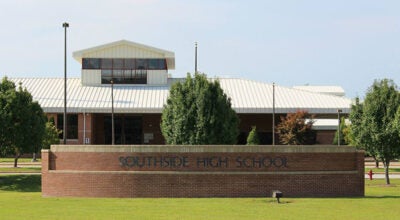The Ocracoke Fig Festival
Published 12:13 pm Thursday, July 15, 2021
|
Getting your Trinity Audio player ready...
|
Ocracoke will be celebrating the great fig during the weekend of August 5-7. This is the 8th annual Ocracoke Fig Festival. To a plant nerd it is great to hear about any plant, especially an edible, being celebrated. But, to a foodie, this is a once in a lifetime type of event. There are so many different offerings throughout the weekend, not the least of which is celebrated chef, Vivian Howard. She, along with many other amazing chefs on the Island, will be offering dishes at the Savory Side of Figs Dinner on Thursday, August 5. Thursday night’s dinner and most of the rest of the Festival’s events will be held at the Berkeley Barn and the Ocracoke Preservation Society Museum, who is the host and sponsor of the festival.
Figs can be used in so many dishes and in so many different ways. They bring sweetness, color, and intrigue whether fresh on the side with sunny side up eggs in ice cream or the famous Ocracoke fig cake. I will be giving a talk on propagating and growing figs on Friday, August 6, come and check it out.
Before we can have our fig cake and eat it too, we need to grow them. Figs are one of the easiest fruits to grow in North Carolina. They have been in cultivation for thousands of years with approximately 470 varieties of common figs. In North Carolina, we only grow common figs because of pollination. The types grown in California for the prune industry require pollination by a special type of wasp that will not survive here. The common fig is a very interesting fruit because the fruit is a modified flower stem. All of the flower parts are on the inside of what we call the fruit.
To grow figs, we first need to select a good site with well-drained, but moist soil. Soil should be tested to ensure pH of around 6.0 by submitting samples to NCDA&CS. Sample kits are available at your local Extension Center. Figs are not as hardy as other plants and therefore will sustain cold damage if exposed to North winds during our winters. Southern facing exposure is the best site condition. It is good for plants to be located in an area that does not receive full morning sun until late morning. The most severe cold damage occurs when the morning sun hits the frozen plants. By allowing thawing before the sun hits the plants, we can mitigate cold damage. Plants do need full sun to flourish but will do satisfactory in part-sun conditions.
Two of the most common varieties grown in our area are Brown Turkey and Celeste. Brown Turkey is light-brown to bronze in color with a medium fruit. They have decent fresh flavor but are really good for preserving. Brown Turkey tends to be a little less cold hardy but produces a fair crop on new growth. So, if you are training to a bush or in a cold spot where winter dieback is an issue, Brown Turkey will work well for you. Celeste is the most cold hardy fig we grow. The fruit is smaller and sweeter making it a better choice to be eaten fresh. The pear-shaped fruit is light-brown to violet-bronze in color and boasts a pink pulp. Celeste is a very vigorous plant that will require pruning if put in a space restricted spot. There are several other varieties that can be grown but these two are tried and true.
It is a good idea to source your plants from respected nurseries in the area in which they are to be grown. They can be either container grown or bare root. The alternative is to propagate your plants from a neighbor. To propagate you can take stem cuttings and root them in potting soil or you can just layer stems. Covering a low hanging branch with soil, or even a brick, will create a rooted plant that can be cut the following season and planted. Figs can be trained to either a tree or a bush through pruning. Training into a small tree or large bush produces abundant fruit and keeps it close to the ground for easy harvest.
If you would like more information on growing figs, contact your local Extension Center. Speak with the Horticulture Agent or an Extension Master Gardener Volunteer (EMGV). EMGV’s become certified by learning about horticulture through the local agent and specialists from across the state. They are required to have 40 hours of classroom instruction and a 40-hour internship to complete their certification. Once certified, EMGV’s give back to the community through information services, diagnosing plant problems, and speaking bureaus. There is a training coming up next Spring, if you are interested, fill out the application and submit to the Washington extension center. You will be contacted for an interview and then invited to attend classes. Interested? Add your name to the interest list by visiting https://go.ncsu.edu/blacklandsemgv.
If you have a question to submit, please email Gene Fox at gene_fox@ncsu.edu. Having trouble with growing in your home landscape, call the Extension office and speak to an Extension Master Gardener Volunteer, Mondays and Wednesdays between 10:00 and 12:00 at (252)946-0111. Learn more on Facebook at the Blacklands Area Horticulture page or visit the Extension Office located at 155 Airport Road. Gene Fox is the area consumer horticulture agent with North Carolina Cooperative Extension.





